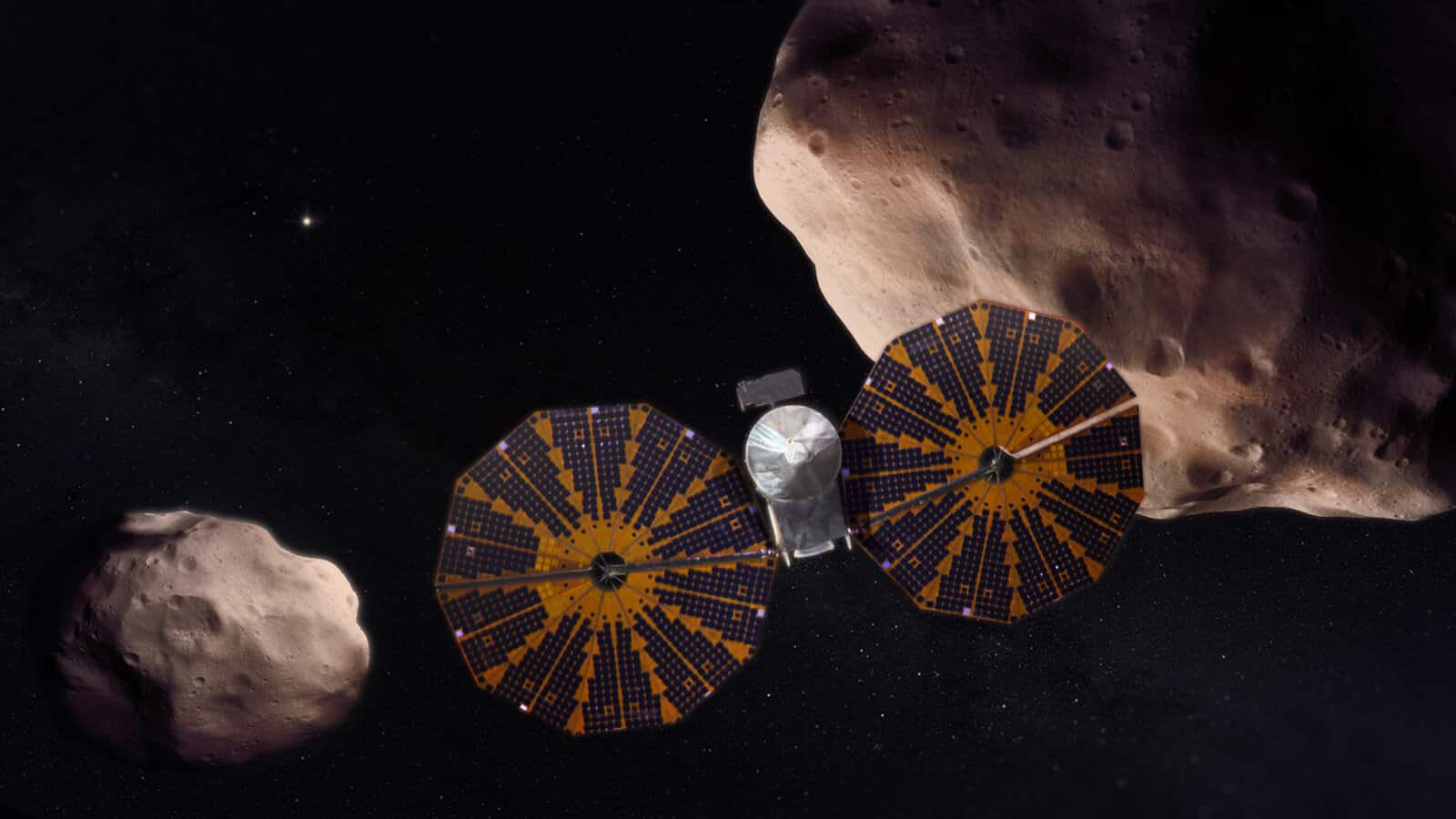Robotic archaeologist Lucy, NASA’s newest asteroid probe, blasted off from Kennedy Space Center here in Florida. Lucy embarked on a 12-year mission to study two different clusters of asteroids around Jupiter known as Trojans.
These swarms represent the final unexplored regions of asteroids in the solar system. Lucy, acting as a robotic archaeologist, will help to answer questions about how the giant planets formed.
Lucy was Perched on top of a United Launch Alliance (ULA) Atlas V rocket. It was a refrigerator-sized spacecraft. The craft lit up the sky of Cape Canaveral as it leaped off its launch pad right on time at 5:34 a.m. EDT (0934 GMT) Saturday morning (Oct. 16). Just under two hours after launch, NASA confirmed Lucy’s solar arrays had deployed and it had successfully phoned home.

Planned voyage of the robotic archaeologist Lucy
Lucy will spend the next six years cruising through the solar system. It will loop around the Earth twice in order to build up enough momentum to reach Jupiter. The spacecraft will fly by a total of eight different asteroids. These are seven Trojans, which are located in two separate swarms.
The trojans are believed to be fragments of the early solar system. These are gravitationally locked in stable orbits at the same distance from the sun as Jupiter. By using a suite of scientific instruments, Lucy will study the geology, composition, density, and structure of each of its Trojan targets.
Lucy in the sky
The mission is named “Lucy” as a nod to the 3.2 million-year-old hominin skeleton. It was discovered in 1974 by a paleoanthropologist named Donald Johanson. This skeleton was the oldest and most complete hominin discovered and it revealed some secrets of human evolution. NASA named its newest spacecraft Lucy hoping that the robotic probe can help unlock some secrets of solar system evolution.
The Lucy fossil got its name from the Beatles’ famous tune, “Lucy in the Sky with Diamonds”. It was playing at the campsite at the time of the fossil’s discovery.
Lucy’s first target is a small asteroid in the main belt between Mars and Jupiter. This belt is named Johanson (Asteroid 52246 Donaldjohanson). Lucy will reach it in 2025. The spacecraft will test its sensors on the small asteroid as a practice run before its main mission. The mission is to fly by seven different Trojan asteroids, ranging in size from a tiny moon to a large binary asteroid.
Composition of the robotic archaeologist Lucy
Lucy is equipped with multiple cameras that will image each of its targets in multiple wavelengths in order to analyze geophysical properties. For instance, by counting and measuring the number of craters on the surface of these asteroids, scientists can determine how old an asteroid is. (The older an asteroid’s surface is, the more craters will be present.)
Scientists will also analyze the color of the asteroids’ surfaces, which can provide some insight into what the rocks are made of. Together with thermal measurements and infrared spectra, scientists are hoping to pinpoint the composition of each asteroid. NASA is especially interested in the notion of finding primordial organic material on asteroids because billions of years ago, this material may have seeded Earth with the chemical ingredients necessary for life thanks to asteroid impacts.
Each asteroid encounter will be at an altitude of 600 miles (970 km) or less from the Trojan’s surface. And after the final flyby, if the spacecraft is in good health, NASA could green light an extended mission and target future asteroids or other celestial objects for further analysis.

Solar-powered spacecraft
During its 12-year mission, Lucy will rely on two giant solar arrays. They will expand outward like folding fans shortly after launch. Its unique looping trajectory will carry it farther from the sun than any solar-powered spacecraft has ever flown before.
The design is based on the same design that currently powers the InSight Mars lander, only much larger. The solar panels will provide about 500 watts of power while the spacecraft is flying past the Trojan asteroids.
Lucy will soar through Jovian Lagrange points and swing back around Earth multiple times. In fact, team members say that Lucy could thrive in this loop-to-loop trajectory for as long as its onboard fuel reserves last. As such, the agency has equipped Lucy with a “time capsule” of poetry, quotes, and song lyrics, in the hope that one day far in the future, space-faring humans might recover the spacecraft and discover Lucy’s treasure trove of information on what life was like in the 21st century.
Levison says that when Lucy has visited all of its targets and sent back all the data, he hopes that the team is able to determine where the Trojans formed.
More on Lucy
Lucy’s liftoff marked the 100th launch from ULA’s facilities at Space Launch 41 here at Cape Canaveral Space Force Station. It’s also the 89th launch of an Atlas V, and the 146th overall launch for ULA since its formation in 2006.
The rocket used in Saturday’s flight is the most basic version of an Atlas V, called a 401 configuration. For this vehicle, the rocket features a 4-meter payload fairing, a single-engine Centaur upper stage, and no solid rocket boosters.
It was originally slated to carry a different payload: Boeing’s Starliner crew capsule. That spacecraft was slated to blast off in August, but was forced to stand down after a series of valves in the craft’s propulsion system was stuck shut. Starliner was ferried back to Boeing’s factory for engineers to troubleshoot the anomaly, while its rocket was stripped of its dual-engine Centaur upper stage in favor of the single engine version needed to launch Lucy.



